
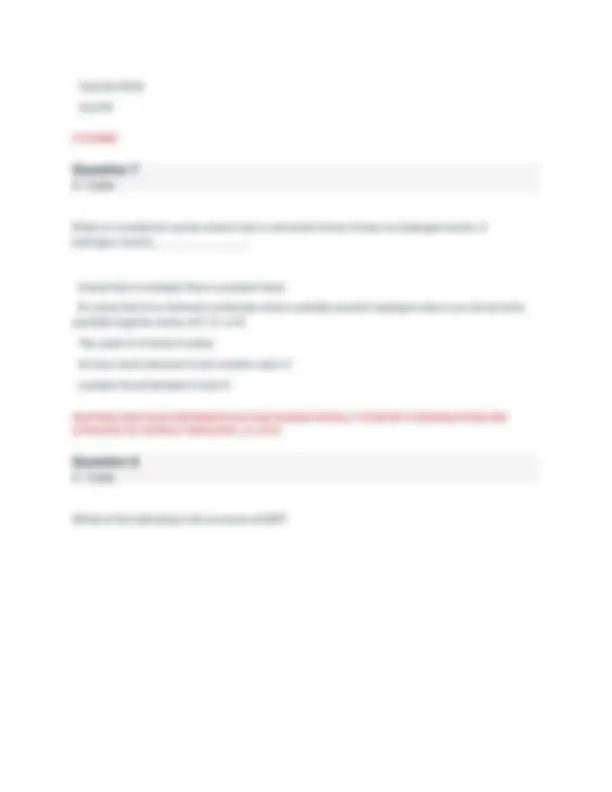
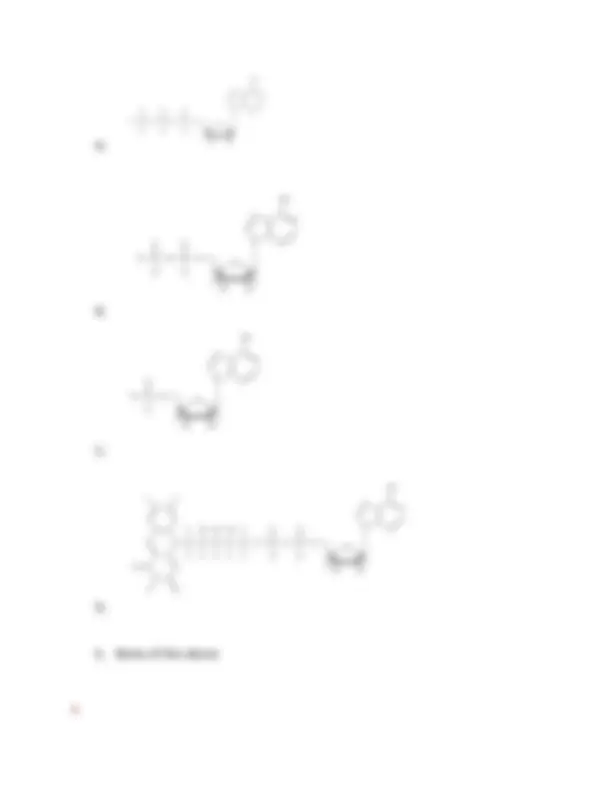
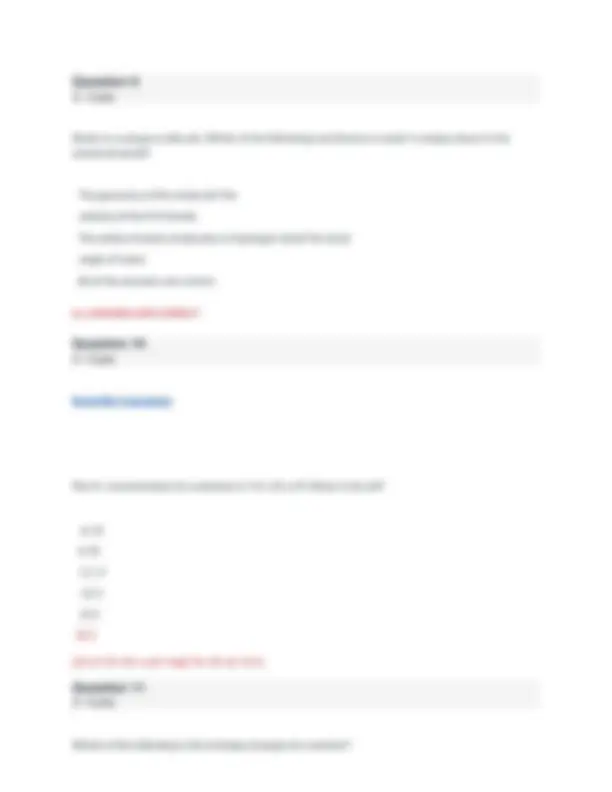

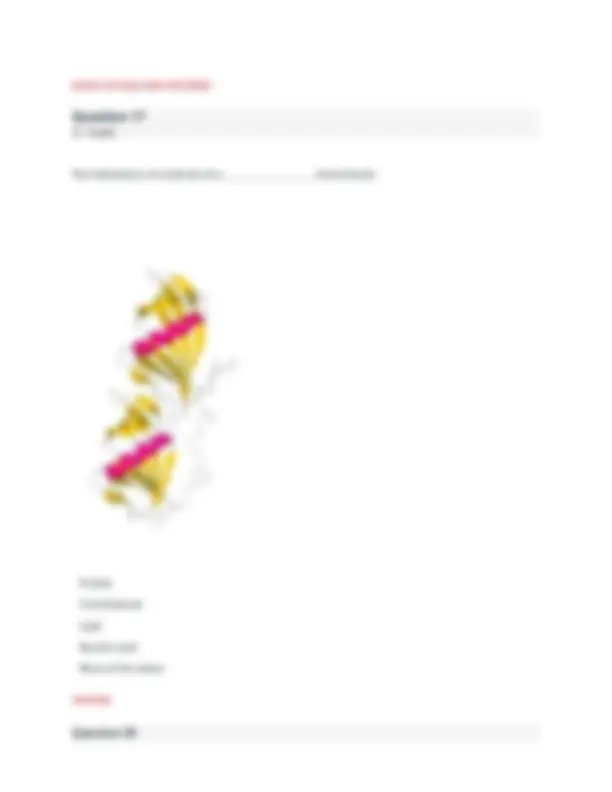
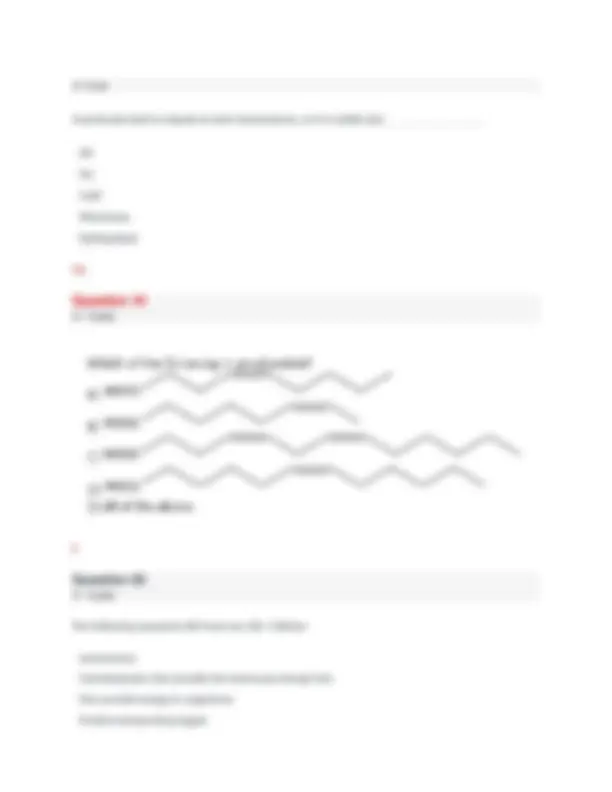
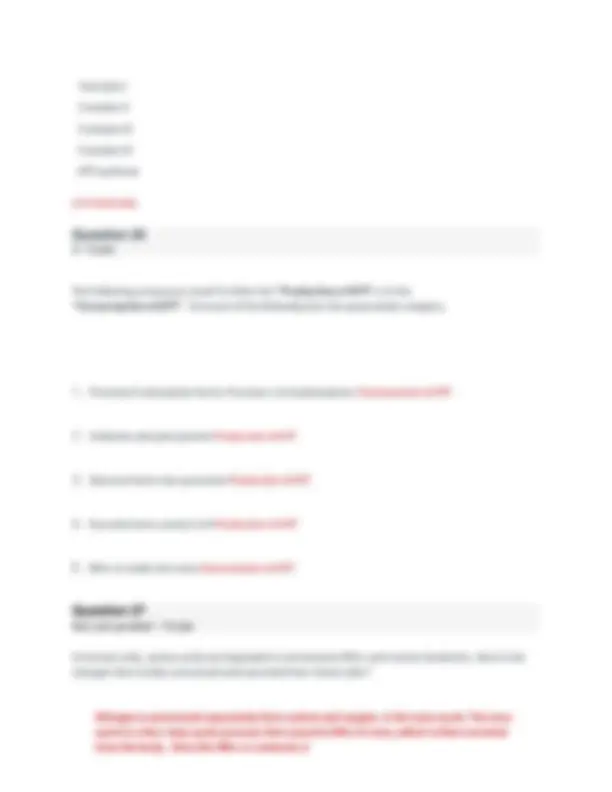
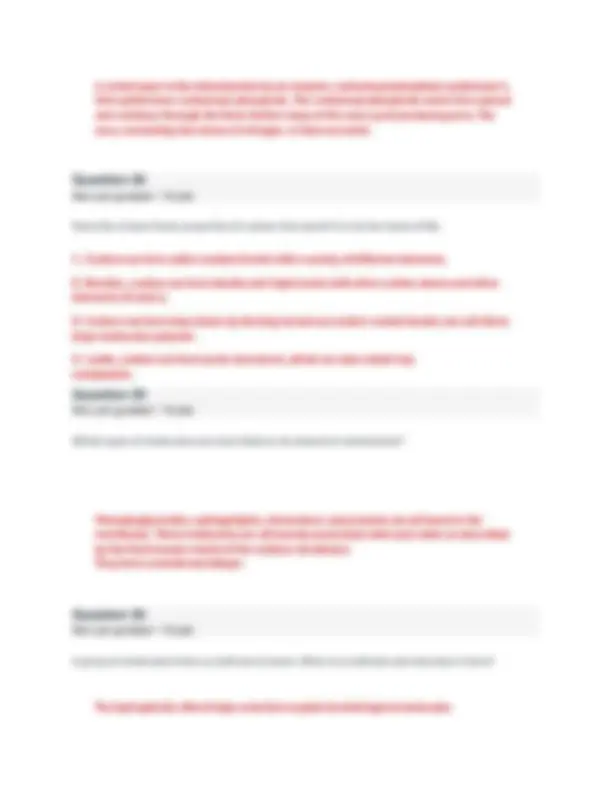



Study with the several resources on Docsity

Earn points by helping other students or get them with a premium plan


Prepare for your exams
Study with the several resources on Docsity

Earn points to download
Earn points by helping other students or get them with a premium plan
Community
Ask the community for help and clear up your study doubts
Discover the best universities in your country according to Docsity users
Free resources
Download our free guides on studying techniques, anxiety management strategies, and thesis advice from Docsity tutors
A series of multiple-choice and open-ended questions related to biochemistry, covering topics such as the properties of water, the structure and function of biomolecules (proteins, carbohydrates, lipids, nucleic acids), enzyme kinetics, and metabolic pathways. It includes questions on hydrogen bonding, protein secondary structures, enzyme cofactors and inhibitors, lipid catabolism, and atp production. The document also features questions that require detailed explanations, such as describing the properties of carbon that make it the basis of life and the processes involved in nitrogen excretion in human cells. This material is useful for students studying biochemistry, providing a comprehensive review of key concepts and principles in the field. (410 characters)
Typology: Exams
1 / 15

This page cannot be seen from the preview
Don't miss anything!










3 / 3 pts
3 / 3 pts
3 / 3 pts
3 / 3 pts
True or False: Nitrogen is called the superglue of the chemical world. FALSE True or False: Large elements, such as strontium, are common in biomolecules. FALSE True or False: The time it takes for a compound to flow through a metabolic pathway is called the payoff phase. FALSE True or False: Proteins, carbohydrates, and fats all get broken down into acetyl-CoA. TRUE True or False: A fat is a lipid molecule that is a solid at room temperature. TRUE
3 / 3 pts
3 / 3 pts
In DNA, guanine always pairs with. Thymine Guanine Uracil
B
3 / 3 pts
3 / 3 pts Water is a unique molecule. Which of the following contributes to water’s unique place in the chemical world? The geometry of the molecule The polarity of the O-H bonds The ability of water molecules to hydrogen bond The bond angle of water All of the answers are correct ALL ANSWERS ARE CORRECT Scientific Calculator The H+ concentration of a solution is 7.9 x 10 - 13 M. What is the pH?
[ [H+]=7.9 x 10 - 13 ; pH=-log[7.9 x 10 - 13 ]= 12.1] Which of the following is the enthalpy change of a reaction?
3 / 3 pts
3 / 3 pts Alpha helix Beta turn Parallel beta sheet Anti- parallel beta sheet Globular sheet ANTI-PARALLEL BETA SHEET A globular protein is an example of a protein. motif Conformation Secondary structure Quaternary structure Amino acid CONFORMATION
3 / 3 pts
3 / 3 pts Any molecule or ion that is necessary for an enzyme’s function is called a Cofactor Coreactant Coproduct Bienzyme Both B and C COFACTOR A(n) is a compound that binds to an enzyme in such a way that the enzyme slows down or stop the enzyme reactions. Ligand Substrate Inhibitor Coenzyme Deactivator INHIBITOR The following are all examples of a carbohydrate’s function in cells except. Structural role in RNA Structural role in DNA Intermediate in metabolism Basis for building proteins Energy source for cells
3 / 3 pts
3 / 3 pts
3 / 3 pts 3 / 3 pts A particular lipid is a liquid at room temperature, so it is called a(n). Oil Fat Lipid Membrane Sphingolipid OIL E The following separates life from non-life. Cellular membranes Carbohydrates that provide the necessary energy Fats that provide energy to organisms Protein transporting oxygen
3 / 3 pts
3 / 3 pts
3 / 3 pts None of the above CELLULAR MEMBRANES The primary sequence of proteins is written. N to C C to N 5’ to 3’ 3’ to 5’ Both A and D N TO C A lipid is. A fat An oil A molecule that dissolves in a non-polar solvent Is made from isoprene units Is water soluble A MOLECULE THAT DISSOLVES IN A NON-POLAR SOLVENT Lipids are catabolized by the pathway.
5 / 5 pts
Not yet graded / 10 pts Complex I Complex II Complex III Complex IV ATP synthase ATP SYNTHASE The following processes result in either the “Production of ATP" or in the “Consumption of ATP”. Put each of the following into the appropriate category.
Not yet graded / 10 pts
Not yet graded / 10 pts
Not yet graded / 10 pts is acted upon in the mitochondria by an enzyme, carbamoyl phosphate synthetase 1, that synthesizes carbamoyl-phosphate. The carbamoyl phosphate enters the cytosol and continue through the three further steps of the urea cycle producing urea. The urea, containing two atoms of nitrogen, is then excreted. Describe at least three properties of carbon that permit it to be the basis of life.
**1. Carbon can form sable covalent bonds with a variety of different elements.